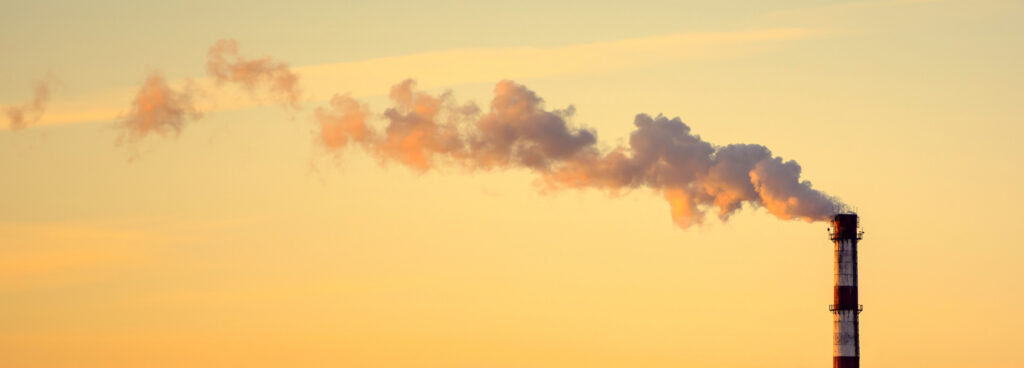
For centuries, humans have been putting our earth to the test. Since the industrial revolution we are depleting the natural resources in a drive for continuous innovation and growth. We are producing and consuming more and more goods and services to accommodate an almost eight times increase in population. We also travel a lot more than we used to with vehicles that create far more pollution, including CO2, than before. In general we have paid little attention to the effects of these economic activities on the environment, only taking action when pollution is directly affecting our lives. This has become a major issue with global warming. Despite warnings as early as 1912 about the effects of releasing large amounts of CO2 in the atmosphere, we have been doing too little for too long, even though effects have already being visible the last couple of decades.
Ecosystem is a term derived from ecology. It describes a natural system that consists of organisms and the environment and the interaction between all of these components within a certain area. These interactions tend to lead to a dynamic equilibrium, that can maintain plant and animal populations for long periods of time. From time to time species will vanish and new ones will emerge. Sometimes a large outside event can disrupt this equilibrium leading to massive extinction from species that cannot adapt quickly enough to the changed circumstances. A business ecosystem describes the business and all the parties it interacts with, its supply chain, customers, competitors, workforce and regulatory bodies. But like everything else the business ecosystems can only exist as part of to the natural ecosystem and it should take its dependence on it into account.
At this time a great man-made disruption of the ecosystem is on-going. As far back as 1982 scientists detected an increased extinction rate of plants and animal that can only describe as a mass-extinction. And now the report of the Intergovernmental Panel on Climate Change (IPCC) shows that the climate is changing at an unprecedented pace due to global warming, caused by humans. It even outlines practically irreversible consequences, such as changes in the oceans, the ice caps and the sea level. If temperatures continue to rise due to persistent environmental pollution, this will have disastrous consequences for the climate, for nature, for people and for the economy. This disruption in the ecosystem will also have great consequences for the business ecosystem.
Due to the global nature of the climate change it has proven difficult for governments to take decisive action when dealing with this environmental crisis. Limiting CO2 emissions has a negative effect on local business competitiveness and results, but a positive global effect. If other countries take less action your own businesses will struggle while they profit from your policies. A classic case of free rider behavior. With the Paris Agreement steps have been made to have every country take measures to decrease CO2 emissions. However consumers and organizations must also take their own responsibility and don’t wait on government regulation. The business ecosystem of the organization depends on the natural ecosystem and they need to look at how they can create more balance in their business ecosystem, so that operational models become more sustainable.
In order to guarantee future prosperity, organizations must take a good look at their environmental footprint. This goes beyond setting and managing (environmental) objectives for their own organization. In a (hyper-)specialized world almost all organizations depend on a whole chain of organizations that contribute to the realization of the organizational objectives. Organizations are not only responsible for their own footprint, but also for the footprint created by other ‘organisms in the ecosystem’. Successful sustainable operation is only possible if the organizations an organization works with are also made responsible for contributing to a better environment. So although environmental awareness is growing within organizations, this does not automatically result in full control over the consequences of business activities as it depends on suppliers in its business ecosystem.
This means that organizations have to manage their relationships accordingly. It is crucial to put sustainability, as a means of operating, very high on the agenda, both on the purchasing side and on the selling side within the ecosystem. Sustainability needs to be part of the contract objectives that guide creation and management of the contracts for these relations. To do this effectively and efficiently, organizations and professionals need a framework that helps them communicate universally, manage the contract in a goal-oriented manner and report transparently on the realization of contract objectives.
Contracts play a major role within organizations, also when it comes to implementation of a sustainability strategy. In the operation focus will obviously be on those objectives and obligations that contribute to delivery of the organizations own products and services. Sustainability objectives are often not met as they are very important to the board, but not as much for staff in the operation. The contract management methodology CATS CM® has been proven effective for years now in managing all contract objectives and obligations within the same contract. This methodology helps professionals and organizations to achieve contract objectives that contribute to the organizational objectives. If organizations want to take their responsibility in slowing down climate change, they can only do so in one way: ensure that sustainability is included in the contracts by default and that this contract objective is proactively managed not just in your part of the supply chain but through the entire supply chain.
Follow & contact